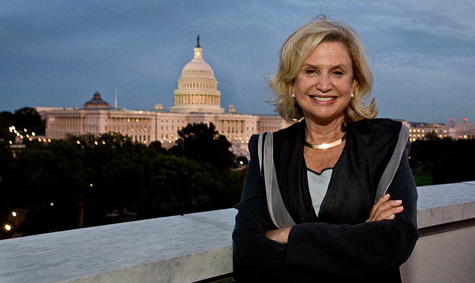
House Democrats and the insurance industry recently released separate proposals aimed at expanding the availability of pandemic-related business interruption insurance. (Bloomberg Law, May 28)
- Legislation introduced on May 26 by Congresswoman Carolyn B. Maloney (D-NY), above, senior member of the House Financial Services Committee, would create the Pandemic Risk Reinsurance Program – a federal backstop that would provide capacity for pandemic risk insurance and maintain marketplace stability with the private sector, modeled after the Terrorism Risk Insurance Act (TRIA).
- Rep. Maloney’s bill – the Pandemic Risk Insurance Act of 2020 (PRIA), H.R. 7011 – has 20 Democratic cosponsors, including four who serve on the House Financial Services Committee. (PRIA Section-by-Section Summary, Bill text and Rep. Maloney news release).
- Rep. Maloney commented on the introduction of PRIA this week with stakeholders during a remote news conference. “We want to solve a market failure by allowing companies to purchase business interruption insurance that covers pandemics so that they can stay in business and keep their workers employed. To solve this marketplace failure, we need to create a federal backstop just like we did with TRIA,” said Rep. Maloney. “That’s why I’ve introduced the Pandemic Risk Insurance Act. This will help relieve some of the economic losses that business are suffering and will protect businesses and the economy from future pandemics.” (PRIA introduction video, May 26)
- Under PRIA, Maloney stated. “… policyholders and insurers and the federal government will share the risks. With this backstop, the insurance industry will have more certainty and will be able to safely underwrite this unique risk.” (PRIA Section-by-Section Summary)
- Rep. Maloney also noted the insurance industry’s May 21 proposal for a federal program to help businesses meet the financial challenges from future pandemics. “It was encouraging to see last week the insurance industry’s agreement with so many members of Congress and policyholders from across the country that pandemic insurance is a viable, actuarially sound product – and that there is an immediate need to create a mechanism to provide relief for millions of struggling business owners.”
- The insurance industry-backed Business Continuity Protection Program, proposed in advance of Rep. Maloney’s PRIA bill, would provide revenue replacement assistance for payroll, employee benefits and operating expenses following a presidential viral emergency declaration. (National Association of Mutual Insurance Companies news release, May 21)
- The proposals from Rep. Maloney and the insurance industry are prospective, and do not address losses associated with the current coronavirus pandemic. The Trump administration, lawmakers and state insurance regulators have warned against measures that would have insurers retroactively pay for current pandemic claims. (Politico, May 21 and Insurance Journal, May 27)
- The Real Estate Roundtable, along with its industry partners, continues to work constructively with policymakers and stakeholders to develop and enact an effective pandemic risk/business continuity program.
Pandemic risk insurance will be a policy focus during The Roundtable’s Remote Annual Meeting and policy advisory committee meetings on June 11-12.
# # #
